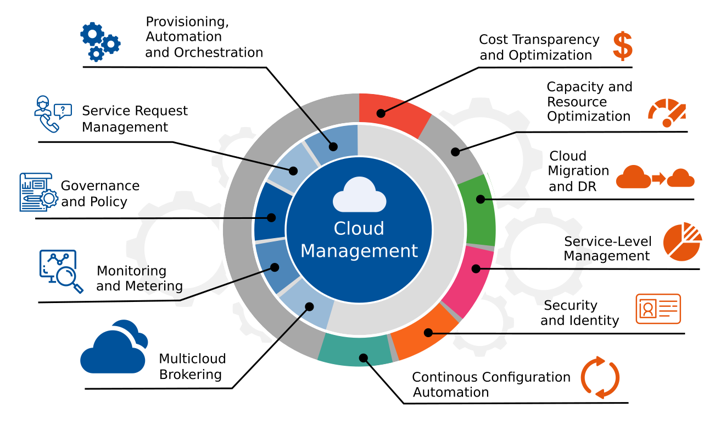
In today’s digital landscape, multicloud environments have become increasingly prevalent among businesses. Multicloud refers to the practice of using multiple cloud computing services, platforms, or providers to meet various workload and application needs. This approach offers flexibility, scalability, and redundancy, allowing organizations to distribute workloads across different cloud environments strategically.
Importance of Calculating Business Value
While adopting multicloud world strategies can offer numerous benefits, businesses need to evaluate the value they derive from these investments. Calculating business value helps organizations make informed decisions, prioritize investments, and optimize resource allocation. In a multi-cloud world, understanding the tangible and intangible benefits is crucial for maximizing ROI and achieving strategic objectives.
Key Metrics for Evaluating Business Value
Financial Performance
Financial performance metrics are fundamental for assessing the economic impact of multicloud deployments. These metrics include cost savings, return on investment (ROI), total cost of ownership (TCO), and revenue growth. By quantifying the financial implications of multicloud adoption, organizations can justify investments and track the efficiency of their cloud strategies.
Operational Efficiency
Operational efficiency measures the effectiveness of multicloud world environments in supporting business operations. Metrics such as uptime, downtime reduction, resource utilization, and response times are indicative of how well the cloud infrastructure aligns with organizational goals. Improving operational efficiency through multicloud deployments can enhance productivity, agility, and customer satisfaction.
Scalability
Scalability metrics evaluate the ability of multicloud architectures to accommodate changing demands and workloads. Scalability indicators include elasticity, resource provisioning speed, and workload distribution across cloud providers. A scalable multicloud world environment enables organizations to scale resources up or down dynamically, ensuring optimal performance and cost-effectiveness.
10 Tips for Calculating Business Value in a Multicloud World
Tip 1: Define Clear Objectives
Before embarking on a multicloud journey, clearly define your business objectives and expected outcomes. Understanding the specific goals, such as cost reduction, innovation acceleration, or risk mitigation, will guide your multicloud strategy and measurement criteria.
Tip 2: Assess Cost Structures
Analyze the cost structures of different cloud providers to determine the most cost-effective options for your workloads. Consider factors such as pricing models, discounts, and hidden fees to accurately estimate the total cost of ownership and potential savings.
Tip 3: Measure Performance Metrics
Track performance metrics related to reliability, availability, and performance to gauge the impact of multicloud deployments on your operations. Utilize monitoring tools and analytics dashboards to assess performance trends, identify bottlenecks, and optimize resource utilization.
Tip 4: Analyze Security Measures
Evaluate the security features and compliance standards offered by each cloud provider to ensure data protection and regulatory compliance. Conduct security assessments, penetration testing, and compliance audits to mitigate risks and safeguard sensitive information.
Tip 5: Evaluate Data Governance Policies
Assess the data governance policies and data management capabilities of cloud providers to maintain data integrity, privacy, and sovereignty. Implement data classification, encryption, and access controls to enforce governance policies and prevent unauthorized access or data breaches.
Tip 6: Consider Integration Capabilities
Evaluate the integration capabilities of multicloud architectures to ensure seamless interoperability and data exchange between different cloud platforms and on-premises systems. Leverage APIs, middleware, and integration tools to facilitate data integration and application connectivity.
Tip 7: Assess Vendor Support
Consider the level of support and service reliability offered by cloud providers to address technical issues, resolve outages, and provide timely assistance. Evaluate customer reviews, service level agreements (SLAs), and support channels to assess vendor responsiveness and reliability.
Tip 8: Monitor Compliance Requirements
Stay abreast of regulatory changes and compliance requirements relevant to your industry and geographic location. Ensure that your multicloud deployments comply with data protection regulations, industry standards, and contractual obligations to avoid legal liabilities and penalties.
Tip 9: Anticipate Future Needs
Anticipate future business requirements and technological advancements to future-proof your multicloud world strategy. Adopt a flexible and scalable architecture that can accommodate evolving needs, emerging technologies, and market trends without significant disruptions or migrations.
Tip 10: Continuously Review and Adjust Strategies
Regularly review your multicloud strategy, performance metrics, and business objectives to identify areas for improvement and optimization. Embrace a culture of continuous improvement, agility, and innovation to adapt to changing market conditions and maintain a competitive edge.
Case Studies and Examples

Insert relevant case studies and examples showcasing successful implementations of multicloud strategies, highlighting the business value achieved.
In a multicloud world, calculating business value is essential for maximizing ROI, optimizing resource utilization, and achieving strategic objectives. By following the tips outlined in this article and leveraging key metrics for evaluation, organizations can make informed decisions, mitigate risks, and capitalize on the benefits of multicloud deployments.
FAQs
-
What is multicloud? Multicloud refers to the practice of using multiple cloud computing services, platforms, or providers to meet various workload and application needs.
-
Why is calculating business value important in a multicloud environment? Calculating business value helps organizations make informed decisions, prioritize investments, and optimize resource allocation in multicloud deployments.
-
What are some key metrics for evaluating business value in a multicloud world? Key metrics include financial performance, operational efficiency, scalability, security measures, data governance policies, integration capabilities, vendor support, compliance requirements, and future readiness.
-
How can organizations assess the cost-effectiveness of multicloud deployments? Organizations can assess cost structures, track performance metrics, analyze security measures, evaluate data governance policies, consider integration capabilities, assess vendor support, monitor compliance requirements, anticipate future needs, and continuously review and adjust strategies.
-
What are some best practices for optimizing business value in multicloud environments? Best practices include defining clear objectives, assessing cost structures, measuring performance metrics, analyzing security measures, evaluating data governance policies, considering integration capabilities, assessing vendor support, monitoring compliance requirements, anticipating future needs, and continuously reviewing and adjusting strategies.



